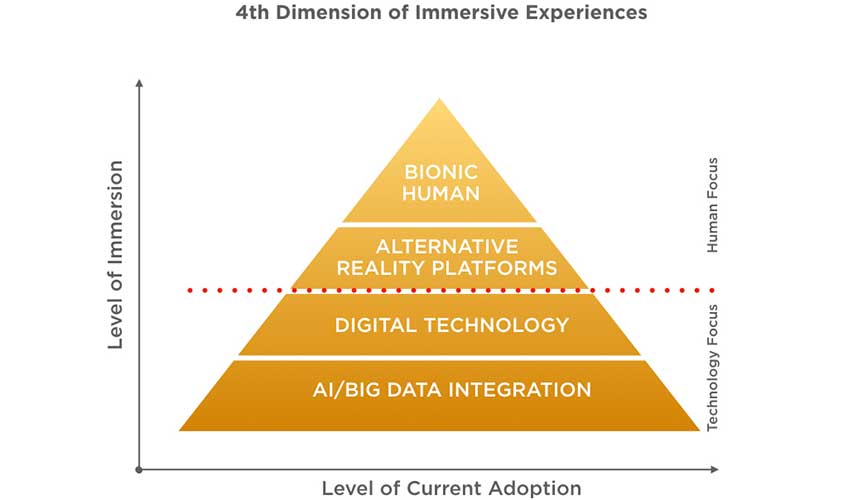Over five years ago, SLD introduced the word “immersive” into our company vision, and identified the term as the new definition of customer engagement. At the time, the idea of creating immersive experiences focused on how technology such as Augmented Reality (AR) and Virtual Reality (VR) would shift the way consumers engage with brands and the built environment. However, since its introduction as a new buzzword, we have realized there is much more to an immersive experience than the use of some shiny new technology.
With the advent of new platforms that have revolutionized customer engagement at the store level, from intelligent ATMs and geofencing mobile enabled apps to 3D image projected systems and voice activated technology, there has been a lot written in industry publications on the benefits of new, innovative solutions. While the hype is deserved, there is one key factor constantly being overlooked, and it is having a significant impact on how customers engage in physical environments. Frontline employees remain the most effective immersive engagement platform to drive brand loyalty and sales, and ultimately they are one of the key reasons people visit stores versus buying online.
Despite this, the past decade has seen the importance of humanizing the retail experience pushed to the side. This is in large part due to the focus on store downsizing and staff reduction strategies as a way of improving retail performance. We believe there are four levels of immersive experiences that will allow technology to eliminate shopper friction points while also enabling better staff engagement and personalization. This shift is happening much slower than expected, as the infrastructure that is required and the level of new training and hiring models continue to be barriers.
In the below diagram, we outline the four levels of immersive experiences, starting from the bottom of the pyramid with AI/Big Data, and progressing upwards through Digital Technology, Alternative Reality platforms and the Bionic Human at the top of the pyramid. The vertical axis identifies the level of immersion within the built environment, with the Bionic Human representing the ideal state of immersive experiences, while AI/Big Data Integration represents the least amount of immersion. The horizontal axis represents the current level of adoption, with AI/Big Data representing the largest amount of corporate investment.

AI/Big Data
As we look at the chart, AI/Big Data Integration is clearly at the forefront of most retailer’s agenda as a means to help harness the depth of knowledge they have on their customers. We view the first level as a way to gain immersive knowledge of the customer shopping behavior, and without it, moving up the immersive pyramid would be difficult.
Digital Technology
The next level of immersive experience reflects Digital Technology, ranging from online, mobile apps to in-store digital signage. There has been broad interest in finding a stickier omni-channel strategy and in delivering a seamless and convenient experience for customers, which is where Digital Technology comes in. This platform is more immersive than the preceding AI/Big Data, as it has a higher level of human interaction compared to the previous tier.
Alternative Reality
The next tier on our pyramid is Alternative Reality Programs, which ushers in the ability to create multiple forms of reality through various types of technology, ranging from Augmented Reality enabled smart phones to Virtual Reality headsets. This allows customers to experience virtual retail from the comfort of their homes.
Bionic Human
The last tier in our pyramid is where we see the biggest opportunity in redefining immersive experiences for both consumers and retail frontline staff. With the advent of smart glasses and contact lenses currently in development, the cumbersome nature of creating virtual worlds will be eliminated. Technology such as sentiment and facial recognition software supported by machine learning will make shopping bionic in nature, removing much of the negative friction points found in shopping today and enhancing a more immersive and engaging experience.
The big divide will occur when retailers and banks move away from the current AI/Big Data and Digital Technology tiers and start to look at how these enhance the human experience. This will help them shift from transactions to a truly immersive experience, one where both employee and customer barriers are eliminated.


